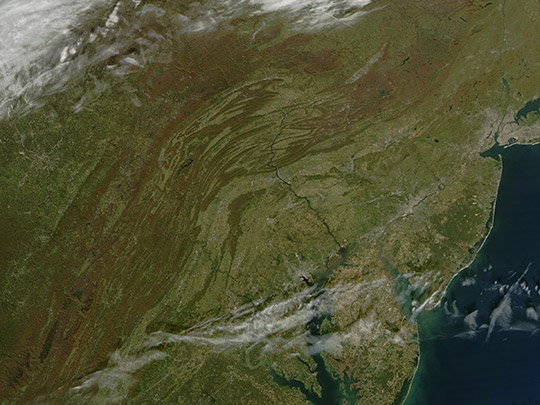Köppen Climate Classification
Climate is the distribution of weather over a long period of time. Climate covers everything from averages to extremes of different meteorological variables, such as temperature and precipitation. Köppen climate classifications give information about these different variables. Pennsylvania straddles two main climatic zones.
The primary zone is classified as humid continental, and is usually found in the northeast portions of North America, Europe and Asia from about 30°N to 60°N.The mean temperature of the coldest month must be below 26°F and there must be at least four months whose mean temperatures are at or above 50°F. Precipitation patterns for this zone state that a location must not be considered semi-arid or arid, and rainfall is well distributed throughout the year.
A very small portion of the southeast portion of the state (near the Delaware/Maryland line) is categorized as a humid subtropical climate. This climate zone has warm-to-hot summers with cold-to-mild winters. The average temperature of the coldest month is below 64°F and above 27°F. There is usually no dry season with this classification, and the rainfall is highly variable year-round.
Let’s explore the what are some of the influences on the climatic zone for Pennsylvania.
